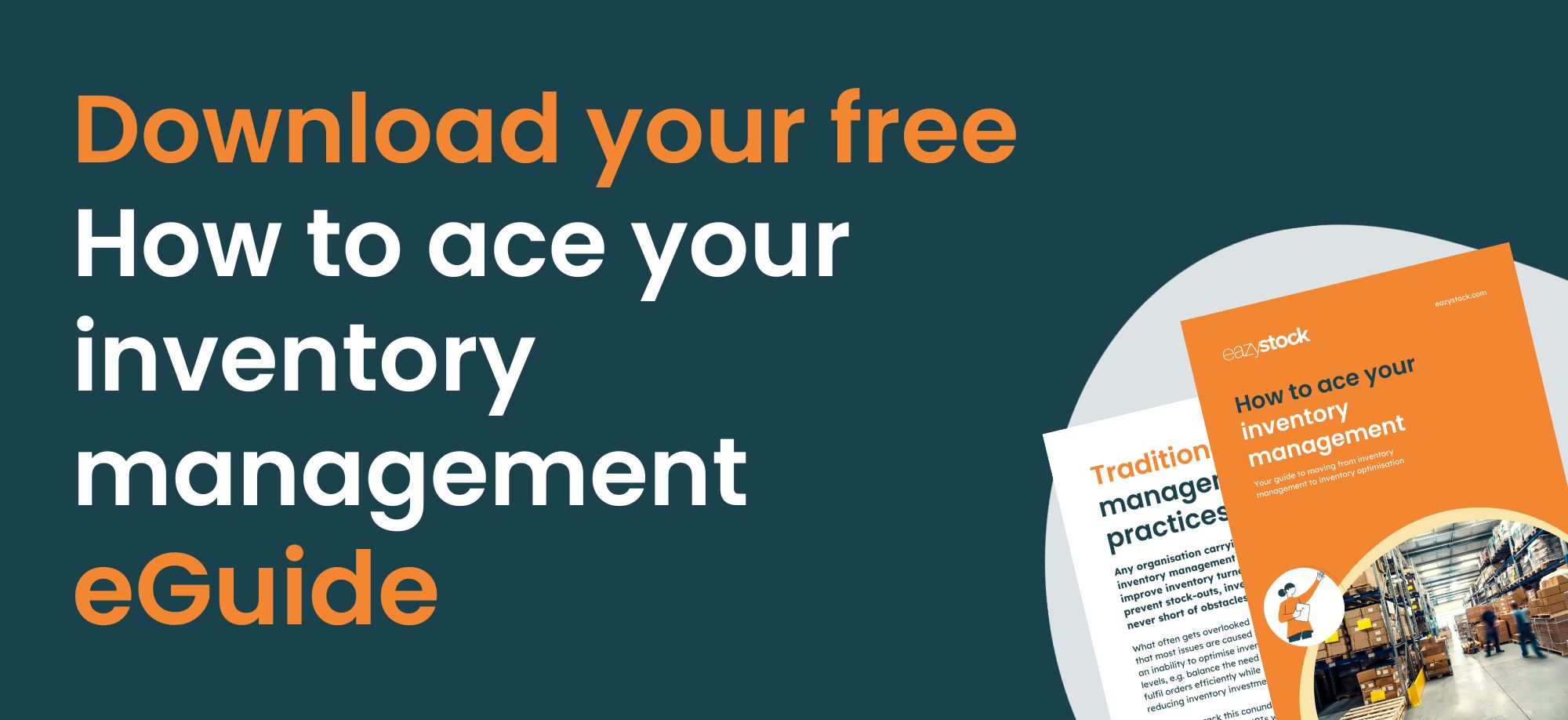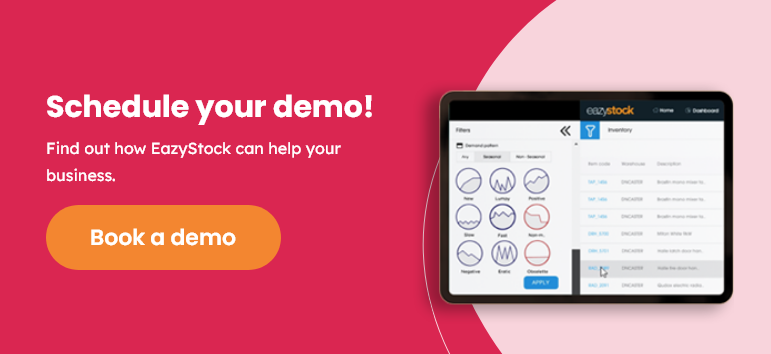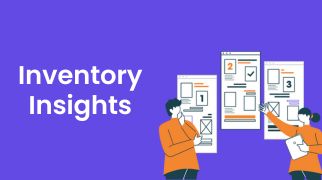Why you need to upgrade your stock ordering processes
EazyStock vs your stock ordering system: Who wins the battle?
The advantage of working in a business for a long time is that you know it inside and out. However, one of the downsides of working in a business for a long time is that you might be using the same systems or processes, even if they no longer meet your business needs.
For example, you have a stock ordering system or an enterprise resource planning (ERP) tool with an inventory management module to manage ordering and replenishment. Your processes might be time-consuming and involve manually checking thousands of lines in multiple spreadsheets, but that’s fine. There’s no need to make any changes.
Let’s put your processes to the test. Do you have excess stock? Frequent stockouts? Back orders? Missed sales? Stressed staff?
Maybe things aren’t working quite as well as you think. That’s because ERP systems excel at overall business management; that’s their primary purpose. They’re often an excellent way to track stock items and manage sales and purchase orders. Unfortunately, with their limited functionality, ERP inventory management modules ultimately hinder rather than help inventory management. They rely heavily on manual intervention, which is time-consuming and prone to costly errors.
The inventory management functionality of ERPs can be enhanced by integrating dedicated inventory systems. These systems are purpose-built to ensure you have the stock you need, when you need it, without over- or under-investing – also known as inventory optimisation. Connecting inventory optimisation software, such as EazyStock, to your ERP will take your inventory management to the next level. You’ll eliminate excess stock, ditch your spreadsheets and increase service levels.

By comparing your current processes with the potential benefits of EazyStock, we aim to highlight the possible risks and costs associated with keeping the same processes. This comparison can help you understand why investing in the right software, like EazyStock, can be more cost-effective in the long run. We also debunk some myths about connecting new software to highlight why making simple changes can yield significant results for your company.
Demand forecasting and inventory planning
Some stock ordering systems include basic demand forecasting and stock planning functionality, but they often rely on manual data uploads to perform these calculations.
For example, in the ERP Microsoft Dynamics NAV you can set values for reorder points and safety stock levels. However, these all have to be entered manually, and will only get updated if you manually choose to do so. This means you need to calculate the desired order quantities for every product in your portfolio, enter these values into the system, and then track and update them when something changes.
This might be manageable when you have a handful of products, but as your business and product portfolio grow, the snowball effect often kicks in. Out-of-control inventory management can mean you’re soon faced with costly excess inventory taking up money that could be invested in other parts of the business. As demand continues to decline, you must sell it at a significant discount, which severely impacts your bottom line, or it risks becoming obsolete and accumulating as dead stock. Once that happens, you must write it off, which creates a larger deficit in the balance sheet. You might also experience increasing stockouts, which lead to unhappy customers and a damaged reputation.
You may have already experienced such issues, or are seeing tell-tale signs that you need to improve demand and inventory planning. Here’s how inventory optimisation software can help.
Every product has a life cycle, from the moment it’s introduced to the market, through to its maturity stage and into decline.
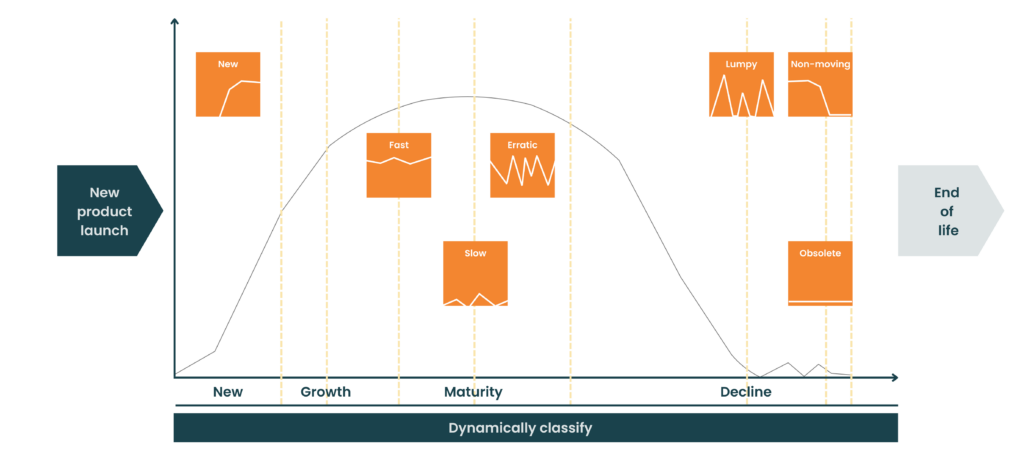
As products move through this life cycle, their demand patterns change, meaning some products will have stable demand, whilst for others it will be more erratic.
EazyStock tracks these changes and automatically adjusts the forecasting calculations accordingly. EazyStock classifies products into nine different demand types. Using the value of annual usage and number of picks allows you to focus on the ones that are most important to your business. This enhances your demand forecasting accuracy, ensuring your replenishment aligns with customer demand and feeds back into your stock ordering system, allowing purchase orders to be raised.
EazyStock uses the same technology platform as our parent company, Syncron, a system employed by world-leading enterprises such as Toyota, Mazda, and Hitachi. The software features advanced algorithms for forecasting demand trends, seasonality, and dynamic safety stock calculations, among other capabilities. We invest heavily in R&D to ensure our tool is the most powerful on the market.
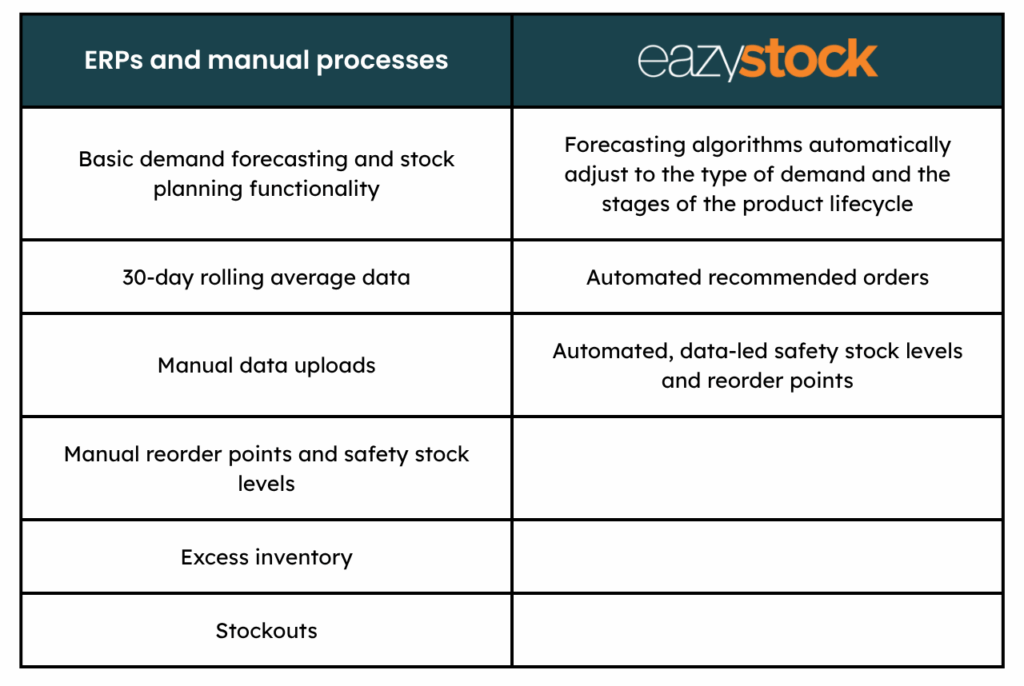
Target service levels (stock availability)
Successful businesses need to have the right products in stock to meet customers’ delivery expectations without over-investing in stock that could harm cash flow if it fails to sell.
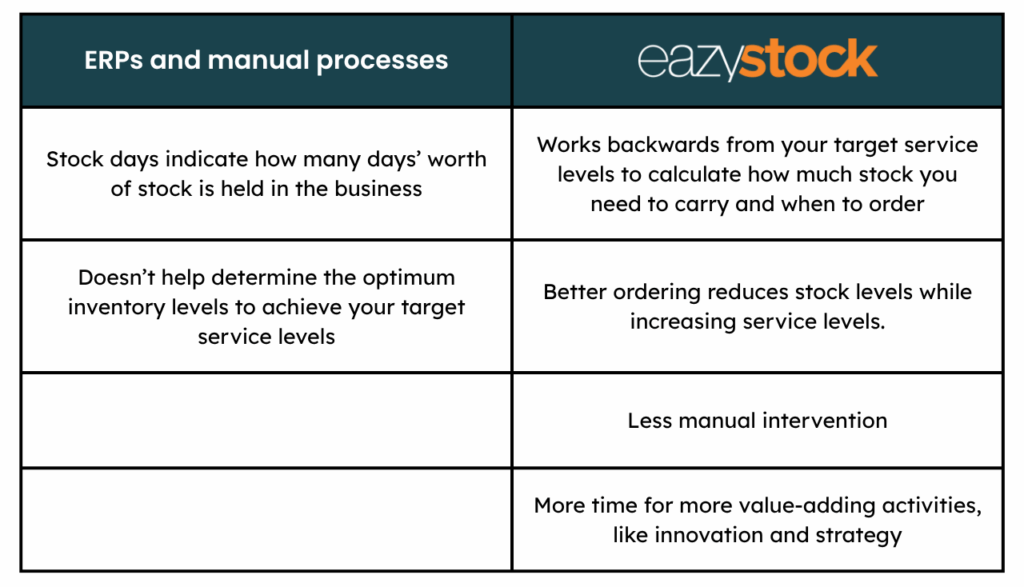
Live service level simulation
What would be the cost of increasing your service levels by 5%? What impact would that have on your company’s finances?
Many businesses struggle to predict the impact that improving stock availability will have on their cash flow. Or, in contrast, how cutting their stock investment could affect fulfilment.
With EazyStock’s live service level simulation, you can make informed, strategic decisions about the service levels you offer your customers, reducing any financial risk by testing scenarios before actual implementation.

Supplier planning
Suppliers can have multiple conditions for orders, such as minimum order quantities (MOQs) or values. They might also have days they cannot receive orders, long shutdown periods or multiple lead times for the different items they supply. Juggling these for multiple suppliers can be challenging, especially if you’re using spreadsheets or paper-based records. You don’t know what items have upcoming demand, so you add random items to the order, resulting in excess stock.
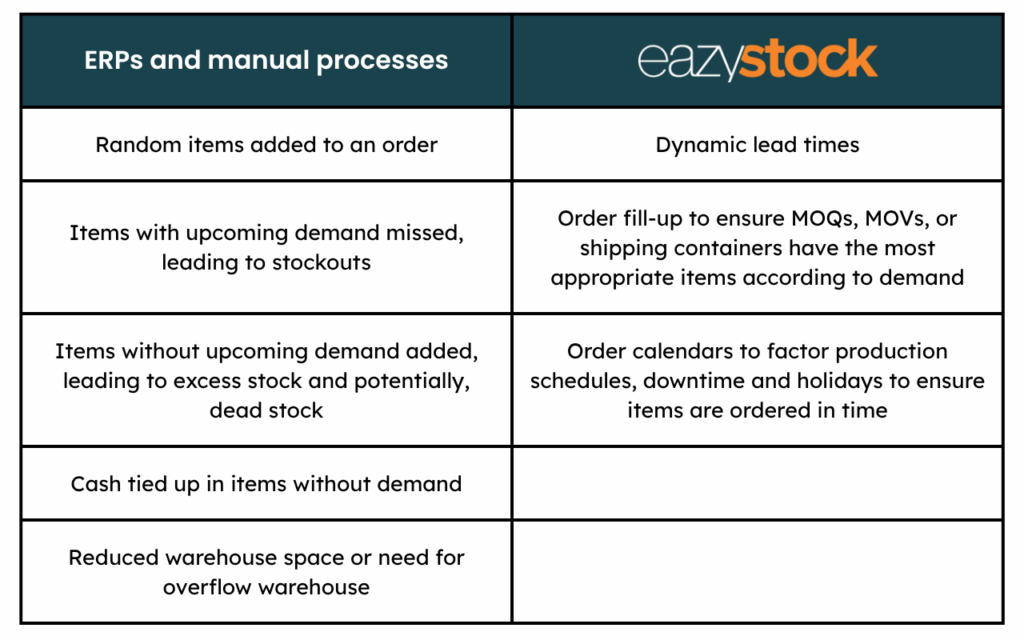
Automated alerts
Typical stock ordering systems require you to review every order line to make sure you don’t miss anything crucial. In comparison, EazyStock generates alerts, allowing you to manage by exception. This means you get notified when you need to replenish, have demand outliers, or risk a stockout. This makes life much easier, and you’ll get time to focus on more value-adding activities.
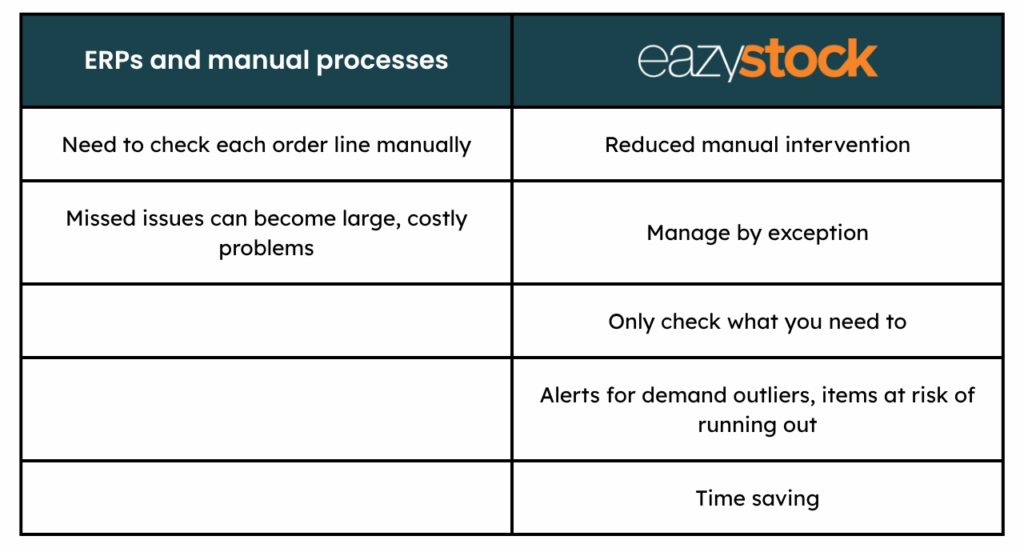
Reports at a glance
EazyStock’s KPI dashboard covers everything you need to track at both the product and group levels. This includes stock health analysis, service levels and stock turn.
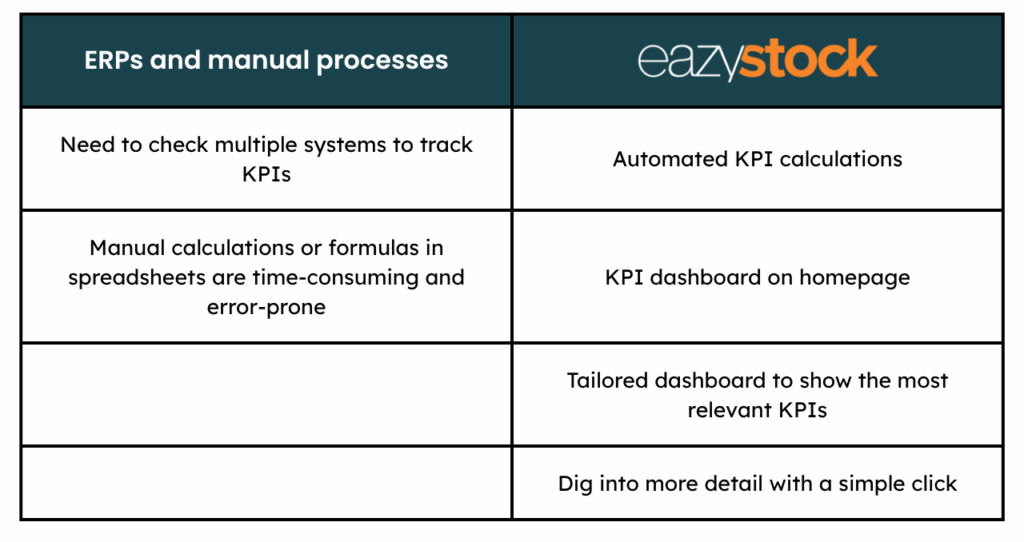
Inventory optimisation myth buster
In today’s digitalised world, it’s not enough to have a rough inventory overview. As product ranges grow and customers demand faster deliveries, you need more precise information to stay competitive. As you’ve seen, ERPs and manual processes can’t compete with the functionality of specialist inventory optimisation tools like EazyStock. Many modern business systems and ERPs can’t provide the inventory management functionality of specialist tools. EazyStock’s ready-made ERP integration connectors make it easy to start optimising your inventory.
It’s too expensive
It’s easy to think that adding new software will be a significant expense. However, as EazyStock is a ‘software as a service’ (SaaS) product, it’s cloud-based, so there is no need for expensive servers or on-site equipment. It’s easy to set up, and you pay a manageable annual subscription fee. Once set up, EazyStock starts delivering a return on investment (ROI) within weeks of implementation. For example, Cutwel found that it paid for itself within a month and a half, while Peppard reduced stock value by over £100,000 over a year.
It will cause too much disruption
As a SaaS product, EazyStock integrates quickly and easily, acting as an extension of your current system. EazyStock requires a data feed of point-of-sale (POS) data and current stock levels, often from your ERP, WMS, or business system, via FTP transfer or automated Excel file upload. There is no business downtime or disruption, as the implementation runs in parallel with other business systems.
EazyStock is often used only by inventory management or purchasing teams, so most people won’t even notice anything is happening. They’ll just get to enjoy the benefits.
It will be too complicated to use
Despite using advanced analysis and sophisticated algorithms, EazyStock is very user-friendly, with easy-to-navigate, customisable screens.
EazyStock’s unique Customer Success Team provides tailored support through integration, system set-up and beyond. Each customer has a dedicated customer success manager to highlight the basics that will deliver ROI from the outset. We then introduce more of the system’s capabilities as users gain confidence and ability.

There’s too much risk in investing in new software
As we’ve already discussed, EazyStock requires very little capital investment. EazyStock is a SaaS software offered via the cloud on an annual contract, so the long-term commercial and operational risks are very low.
Our data won’t be safe, and we risk cyberattacks
Cyberattacks are becoming more prevalent. We understand that adding new software to your tech stack increases the risk even further, but at EazyStock, we take information security seriously. With ISO 27001, ISO 27017, and SOC-2 Type 2, we protect against unauthorised or unlawful data processing, accidental or unlawful destruction, loss, alteration, or damage, as well as unauthorised disclosure of or access to customer data.
You can read more about our information security management systems in our data processing addendum.
I don’t believe it will work
To resolve the scepticism around whether EazyStock can improve inventory processes enough to see a tangible ROI, we offer a free Stock Health Analysis. We’ll load your data (under NDA) into our demo system, allowing us to highlight areas where you can make savings and improve efficiency.
ROI ultimately comes from enhancing fulfilment and reducing stock levels (in particular, excess stock) to save money. Customers also benefit from a wide range of other optimisation features.
If you’d like to understand how EazyStock can help your organisation, or would like us to discuss it with other team members, please contact our team to arrange a call or demo.
